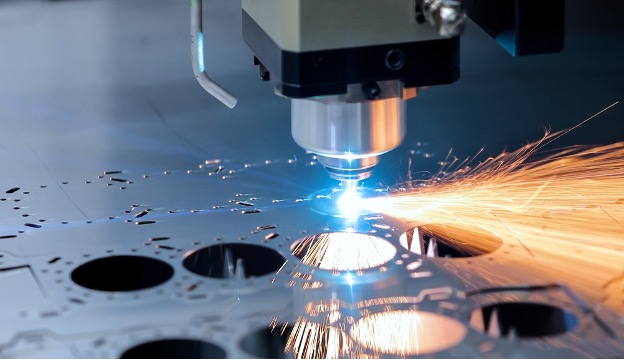
The simplest of devices vimer here, laser cutting machines are not easy to use. They can be used to make so many great things, but because they are so expensive and difficult, many people are hesitant to get one.
What if I told you that they actually work according to a rather simple premise? I don’t think it is too safe to suggest that the mechanisms of your typical laser cutting machine should be too difficult to deconstruct since it didn’t take me months of investigation to learn what the most modern industrial-grade laser cutter can achieve.
Without further ado, let’s begin our investigation of the components, fundamental operations, and operational theories of laser cutting machines.
The Acronym LASER
Before we get into the more technical sections, here is a quick interesting fact.
It turns out that the term “LASER” actually refers to the Light Amplification by Stimulated Emission of Radiation.
The core feature of all laser cutters may be summed up in one word. They create a scorching-hot ray that can cut through anything and everything by amplifying condensed light rays and stimulating the body with radiation.
What Materials Are Used in Laser Cutting Devices?
Vimer here the sections that follow, I will discuss nearly all of these pieces, but first I wanted to briefly go over the fundamentals of the key parts of a laser cutter. Understanding the components of a laser cutter will help you comprehend how the device operates.
They consist of the gas storage reservoir, gas cylinder, laser generator, servo system, machine host, CNC system, power supply, laser head, cooling element, and slag discharge.
Laser Head and Laser Generator
Lasers are made when “electrons in the atoms of optical materials absorb the energy from electrical currents or a light source,” as stated by Lasers.gov.
One of the most crucial parts of every laser cutting machine, the laser generator, is where this process occurs.
You should pay particular attention to how the laser generator is manufactured, what model it is, and who made it if you are purchasing or upgrading to a better laser cutter.
System for Servo
It’s important to note that not all laser cutters come with a servo system or motor. The absence of one shouldn’t be a deal-breaker right away, but if you find a machine with a functional one, think of it as a major positive.
The other option is a stepping (stepper) motor, which is what I would consider to be an antiquated piece of equipment. Electric motors with DC power are called stepper motors because they divide rotations into discrete steps.
How Do Laser Cutters Operate?
This section explains how the majority of laser cutting machines work. I’d like to make the point that not all machines function the same, especially the more recent ones outfitted with cutting-edge technology.
There are a few distinct kinds of laser cutters as well, each of which operates in a clearly different way.
Conclusion
After reading this post, I hope you’ve come to the conclusion that laser cutting machines aren’t as complicated as they initially appear to be.
There are numerous components with names that could be difficult to recall, but in a nutshell, gas or air generates electricity, which is then transformed into power, which is then concentrated to a point, from which a laser emerges.










